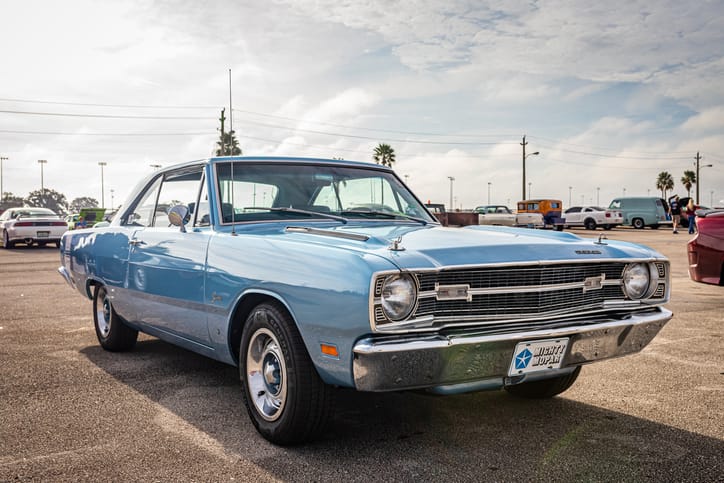The Dodge Dart: A Tale of Two Eras

The Dodge Dart nameplate holds a unique position in American automotive history. Encompassing two distinct eras, the Dart served as a full-size car, a compact car, and even a Fiat-based offering in its later years. This article explores the fascinating journey of the Dodge Dart across its two iterations, highlighting its design evolution, performance characteristics, and market impact.
The First Era: A Full-Size and Mid-Size Legacy (1960-1976)
Dodge introduced the Dart in 1960 as a lower-priced alternative to its full-size offerings. Initially envisioned as a mid-range full-size car, the Dart quickly transitioned into a mid-size vehicle for the 1962 model year. This shift reflected the broader market trends towards more practical and fuel-efficient cars.
Throughout the 1960s, the Dodge Dart offered a variety of trims and engine options. The base model appealed to budget-minded buyers, while higher trims like the Dart Coronado boasted luxurious features and more powerful V8 engines. The Dart also found favor with performance enthusiasts, with the iconic Dodge Dart GTS arriving in 1963. Featuring a sporty design and a powerful 330 horsepower V8, the GTS established the Dart's performance credentials.
By 1 967, the Dart had shrunk further, becoming a compact car. This transformation aligned with the dominance of smaller, nimbler cars in the American market. The compact Dart continued until 1976, offering reliable transportation and a touch of Dodge muscle in trims like the Dart Swinger.
Design Evolution: From Finned Nostalgia to Compact Efficiency
The design of the Dodge Dart mirrored the changing automotive landscape across its first era. The early 1960s models embodied the "finned" aesthetic popular at the time, featuring prominent tailfins and chrome accents. As the decade progressed, the design leaned towards cleaner lines and a more muscular stance.
The transition to a compact car in 1967 necessitated a significant design overhaul. The Dart adopted a sleeker, more contemporary profile, reflecting the growing influence of European design sensibilities. While retaining a hint of Dodge's signature boldness, the compact Dart prioritized practicality and efficiency.

A Legacy of Performance and Affordability
The Dodge Dart's first iteration carved a niche for itself by offering a compelling combination of performance and affordability. The base models provided reliable transportation, while higher trims and performance variants like the GTS catered to driving enthusiasts. The Dart's legacy is further cemented by its success in motorsports, with the car achieving podium finishes in various racing competitions throughout the 1960s and 1970s.
The Second Era: A Fiat-Based Compact (2013-2016)
After a nearly four-decade hiatus, Dodge resurrected the Dart nameplate in 2012 for the 2013 model year. This iteration marked a significant departure from its predecessor. Built on a platform shared with Fiat, the new Dart was a front-wheel-drive compact car designed to compete with the likes of the Honda Civic and Toyota Corolla.
The 2013-2016 Dodge Dart offered a range of four-cylinder engine options, delivering a balance of fuel efficiency and adequate power. The Dart also boasted a modern and stylish design, featuring Dodge's signature aggressive grille and a sculpted body. The interior incorporated higher-quality materials and offered a range of technology features, including a user-friendly Uconnect infotainment system.
Despite its modern features and competitive pricing, the second-generation Dodge Dart failed to capture significant market share. Dodge ultimately discontinued the Dart in 2016, citing slow sales figures.
A Short-Lived Revival with Mixed Reviews
The second-generation Dodge Dart received mixed reviews. While some praised its design, technology features, and comfortable ride, others criticized its lack of driving dynamics and the feeling of being less substantial than its competitors. Additionally, some enthusiasts lamented the loss of the powerful, muscular character that defined the original Dart.
The Dodge Dart: A Legacy Defined by Transformation
The Dodge Dart's story is one of transformation. Across its two eras, the car embodied the evolving automotive landscape in the United States. From a full-size and mid-size contender to a compact offering, the Dart consistently provided buyers with a compelling value proposition. While the second-generation Dart's revival proved short-lived, the nameplate holds a place in Dodge's history, serving as a testament to the brand's ability to adapt and cater to changing consumer preferences.
